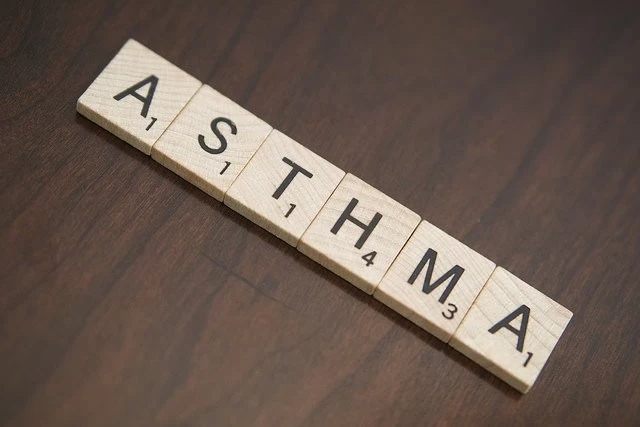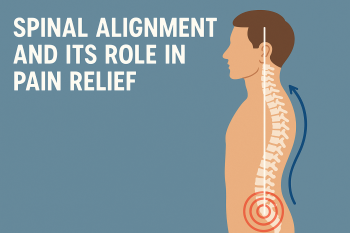
Blair Upper Cervical Specific chiropractic care is one of the most powerful forms of healthcare in the world. Arguably, it is also the most precise and patient-centered form of care because everything that Blair doctors do is custom-tailored for every patient.
The focus of upper cervical care is on the top three vertebrae in the neck - C1, C2, and C3 - and their relationship with the brainstem, which is the master control center of the nervous system. Every year, thousands of people suffering a wide array of medical conditions seek the help of Blair Upper Cervical doctors.
What is most amazing is that these people, most of whom have been to dozens of medical doctors, medical specialists, natural health practitioners, and even other chiropractors over the years - spending thousands of dollars without results - finally discover the relief, for which they’ve long been searching.
And when they do, they want to know about two particular things:
- Why did no one else find the problem on any of their other diagnostic test before? and
- How could a problem with the upper neck cause their problems in the first place?
This article will answer both of these questions.
Question #1: Why did no one find the problem before?
Medical tests including CTs and MRIs show five things: fractures, bleeding (such as a stroke), cancer, infections or pathology (e.g., brain lesions associated with Multiple Sclerosis). They do not look for the significant but tiny (1-3mm) misalignments of the upper neck that can disrupt the normal function of the central nervous system!
Even general x-rays don’t show these misalignments clearly, which is why most chiropractors cannot identify the problem either. The reason is that every human being’ is built differently. Therefore, only by measuring each person’s normal bone structure can you understand what “abnormal” for the person really is.
If you are in a neutral position and if you could see any joint in the body - whether in the upper neck, low back or little toe - it should properly line with the bone above and below it. Dr. William Blair, the founder of the Blair Upper Cervical method, developed a system whereby he could create custom-tailored x-rays for his patients.
These x-rays called “Blair Protractor Views,” showed several amazing things: (1) they showed the joint articulation between the skull and the top vertebrae in the neck, called the C1 (atlas); (2) they showed exactly if those joints were properly aligned, or if they were not; and (3) they showed what the best was to correct it was, based on the patient’s own bone structure.
What you may find most interesting is that these views are not found in any medical or even chiropractic x-ray textbook! Only 30 years ago, there were fewer than 12 Blair Doctors in the world doing this work.
Today, there are over 100 … but still only 100 in the entire world! That is how rare but valuable this work truly is! The sad truth of the matter remains that this form of healthcare remains widely unknown - not only from the medical and chiropractic communities but tragically from the millions of suffering people worldwide who desperately need it.
That is the reason no one could find the problem before. Simply put, it is because they weren’t looking for it and didn’t know-how.
Question #2: How did the Upper Cervical adjustment work?
The truth of the matter is, we don’t know! Even today, there is no “smoking gun” that shows exactly how upper cervical chiropractic makes such profound changes in people’s lives. That said, with our understanding of neuroanatomy plus exciting advances in technology over the past decades, there are 3 significant ways that we believe the upper neck affects your health:
Mechanical Nerve Tension
- Brain Fluid Dynamics and
- Dysafferentation.
- Let’s have a look at these, one at a time.
The ANS is subdivided into two major categories: the Parasympathetic System and the Sympathetic System. The major nerve of the Parasympathetic System is the Vagus Nerve that controls all your internal organs and is associated with “rest, repair and digest” activities.
The major nerve of the Sympathetic System is the Superior Cervical Ganglion (which is actually a cluster of nerves) that controls blood flow to the brain and is associated with “fight, freeze or flight” (aka stress) responses. Both the Parasympathetic and Sympathetic systems are controlled by a part of your brainstem called the Nucleus Tractus Solitarius (NTS). Moreover, both the Vagus Nerve and the Superior Cervical Ganglion lie directly in front of the C1, C2, and C3 vertebrae.
In brief, your brainstem is your life! This is why breaking your neck results in incomplete paralysis or even death! But we aren’t talking about that! What we are talking about is called a “subluxation” which is a 1-3mm misalignment from some type of injury that your body cannot self-correct … and which Blair Upper Cervical Doctors believe reduces the ability of your nervous system to work properly.
Let me put it this way? Would you rather have your nerves and your organs working 95% or 100%? Although the difference may be only 5%, like compound interest on a mortgage or a savings account multiplied over months, years or decades, it makes a massive difference to your health! That is the type of problem that we are talking about!
Fortunately, your body has a built-in protection mechanism to preserve all these vital functions. , your brainstem is covered in a thick layer of connective tissue called the dura mater.
In turn, the dura mater is anchored to the upper vertebrae in the neck by structures called myodural bridges. Essentially, myodural bridges are tethers that prevent your brainstem from being crushed when you move your head. Researchers also believe that myodural bridges facilitate the normal circulation of cerebrospinal fluid, which nourishes your brain its energy (but more on that later).
Mechanical Nerve Tension
(Hang on for a wee bit here. This part is a bit technical, but is written for people who want to know the facts about their amazing healing experiences.)
Your brainstem is the master control center of your body. It is located at the junction between your upper brain and your spinal cord. It is also the driver of your Autonomic Nervous System (ANS) refers to the nerves that control everything in your body that you don’t have to think about: balance, coordination, muscle activity, heart rate, blood pressure, breathing, digestion, immune activity, hormone regulation, sleep … everything!
Here is the problem: if your C1 (atlas), C2 (axis), or C3 vertebrae are misaligned, the myodural bridges do something completely different. Instead of protecting your brainstem, they impart physical tension that literally pulls on it! The term used to describe this process coined by medical doctor Alf Brieg is “adverse mechanical tension.”
In support of this idea, researchers from the University of Colorado found that it takes only 5g worth of pressure to reduce the firing of a nerve by 60% within only 15 minutes. That’s only the weight of a 10c coin! Moreover, scientists have identified that the ligaments that support your brainstem are so strong that your spinal cord itself will tear before they do!
The ultimate point is that because your brainstem is the driver for all your body’s vital functions. any amount of pressure that negatively affects it for a long period of time causes increasingly severe problems.
Upper Cervical Doctors believe that this is the reason that so many of their patients have such amazing responses when under care, including many non-musculoskeletal conditions.
Nerve Tension
Mechanical nerve tension from misalignment in the upper neck is not limited to the brainstem. It also affects your spinal cord and all the nerves associated with it. Elaborating on what we identified before, your spinal cord is a loose piece of string anchored to the inside of your skull, the C1, C2, and C3 vertebrae, and then it is free-floating until it attaches to the inside of your tailbone (sacrum).
Like a piece of string, if you pull it from the top, the tension travels down its entire length, which potentially disrupts the transmission of every nerve message in your body.
In other words, no message gets to or leaves the brain without being influenced by what is happening in the upper neck. This can show up in a number of different ways in your muscles, joints, and ligaments. Among the most common concerns that people have are headaches, migraines and shoulder, and lower back pain.
Your brain will do whatever to takes to minimize the stress to your brainstem: even it if means sacrificing your posture, dropping one shoulder, dropping one hip … essentially making your body appear crooked. While this may be a useful short-term adaptation, over months, years or decades it causes undue stress through your body, potentially causing rigid muscles, disc bulges, osteoarthritis plus pain in areas of your body that you would never associate with your upper neck.
Brain Fluid Dynamics
It doesn’t end there. Mechanical nerve tension is only the first reported mechanism that misalignments of the upper neck are so serious. Research also shows that the alignment of the upper neck has a massive influence on the normal flow of blood to the brain (arteries), from the brain (veins) and also of cerebrospinal fluid (CSF), which is the watery substance that protects and provides nourishment to your brain.
Looking at the arteries first, 1/3 of all the blood that flows to your brain goes through a pair of vertebral arteries, which pass directly through the C1-C6 vertebrae. Effectively, the vertebral arteries supply 100% to your brainstem (re all internal organs and vital life functions), your cerebellum (balance, coordination, and movement), and certain parts of your brain that are associated with vision, hearing, sleep, and memory.
In the space between your skull, the C1, and the C2 vertebrae, the arteries are subject to additional stresses that can disrupt their normal flow. It is the reason that Blair's Upper Cervical doctors believe that visual disturbances, inner ear problems (including blocked ears), and balance disorders are all commonly seen in people who have an upper neck misalignment.
Now looking at the veins, blood drain from your brain through either the internal jugular vein (front of your neck) or through a pair of vertebral veins. Here’s the interesting part: when you stand/sit upright, the internal jugular veins collapse.
This means that the only pathway to clear blood from your brain is through the vertebral veins, which unfortunately are subject to the exact same types of stress in the upper neck that can disrupt flow through the vertebral arteries.
The consequences are slightly different. The blockage of the vertebral veins causes blood to congest and pool backward inside of your skull, which affects the consistency of your cerebrospinal fluid (CSF). In other words, instead of having pure, clean CSF, you get a stagnant cesspool containing debris that has the potential to damage your brain.
In fact, a growing body of research shows that misalignment of the upper neck that affects the flow of venous blood and CSF has a massive potential impact on the development of neurodegenerative disorders including Multiple Sclerosis, Post-Concussion Syndrome, and Parkinson’s Disease.
More importantly, the research demonstrates that correcting these misalignments significantly improves the symptoms associated with the condition!
Just as profound as an impact as misalignment in your upper neck is, causing direct physical tension on your brainstem, spinal cord and nerves so too do the misalignment affect the flow of fluids that can just as severely affect your health.
Dysafferentation
I think that you can appreciate by now that even though the upper neck is such a small area of your body, even small disturbances have massive effects that impact your whole life! However, there is a third that Blair Upper Cervical doctors believe the upper neck can cause such systemic health problems.
It is called “dysafferentation,” which means that the brain is receiving abnormal input: either too much information, too little information, or corrupted data.
Your brain is a supercomputer: an incredible piece of machinery capable of processing an estimated 1 Quintillions bits of information per second. However, like any computer, it has a finite processing capacity and can only operate based on the quality of the information it receives.
Even if you buy a brand new computer but then turn on every program and start multiple downloads and uploads all at the exact same time, the computer will slow: maybe even freeze or crash! That is what I mean by “processing capacity.”
Your upper neck contains a huge number of sensory receptors (neurons). As far as your brain is concerned, is the most important area of your entire spine. If the vertebrae in your neck are misaligned and moving abnormally in such a way that your nerves and muscles cannot self-correct the problem, there is a cascade of abnormal information that bombards your brain.
Information overload! Your brain will adapt to the situation, but if it cannot resolve the problem, the signals keep coming, which reduces your nervous system’s processing capacity.
As mentioned before, Blair's Upper Cervical doctors believe that as your nervous system capacity drops from 100% to 90% to 80% efficiency and so forth over long periods of time, this is what leads to numerous health problems.
Supporting this hypothesis is research that indicates specifically how adjustments to the neck improve the way that your brain processes pain, improves your ability to think like a rational human being, improves your muscle efficiency, and even improves the function of your autonomic nervous system (ANS)!
Conclusion
If you have read this article through completion, well done! It is not an easy subject to cover. In brief, current science supports the belief that adverse mechanical nerve tension and altered brain fluid dynamics that can happen as the result of an upper neck misalignment limits the ability of your nervous system to process information (i.e., reduced computer processing capacity), and then that dysafferenation - a process of “info overload” bombards the already-congested system, which causes your whole nervous system to function less efficiently.
And there it remains - leaving you to become progressively more unwell - until the problem is finally corrected. It is also the reason why no diet, no exercise, no medication or no surgery is able to address the problem.
If it was a matter of that - or if it was something that your body was able to self-correct through stretching and exercise - it would have happened a long time ago!
The misalignment, the subluxation of the upper neck as studied by Upper Cervical Doctors for nearly 100 years is a neuromechanical problem that requires a physical solution - a specific correction to the right part of the spine in the right way at the right time - that that reduces the mechanical tension, that restores the normal fluid flow and that decongests the processing ability of your nervous system.
Blair Upper Cervical Specific Chiropractic is not just about bones, because aside from their shape there is really nothing that special about the bones in the upper neck at all! What is special is the unique and profound relationship they have with your nervous system - unlike anywhere else in your body! - and that requires the most care, precision, and detail to correct.
As mentioned before, there are fewer than 100 Blair Upper Cervical Doctors in the world. However, if you have read this article and believe as we do that this type of care has the potential to make a real positive change in your life, your family, your friends, and your community, make sure that you schedule a consultation with your closest Blair Upper Cervical Doctor so that you can start living the life again that you were born to live.
Citations
- Blair WG. Research; for evaluation; for progress. Intl Rev Chiropr 1968;22(8):8-11.Blair WG. Research: for evaluation; for progress. Intl Rev Chiropr 1968;22(9):10-14.Blair WG. Research: for evaluation; for progress. Intl Rev Chiropr 1968;22(12):14-16.
- Pontell ME, Scali F, Marshall E, Enix D. The obliquus capitis inferior myodural bridge.Clin Anat. 2013 May;26(4):450-4. doi: 10.1002/ca.22134. Epub 2012 Jul 26.
- Enix DE, Scali F, Pontell ME. The cervical myodural bridge, a review of the literature and clinical implications. J Can Chiropr Assoc. 2014 Jun;58(2):184-92.
- Zheng N, Yuan XY, Li YF,et al. Definition of the to be named ligament and vertebrodural ligament and their possible effects on the circulation of CSF. PLoS One. 2014 Aug 1;9(8):e103451. doi: 10.1371/journal.pone.0103451.
- Qiang X, Sheng-Bo Y, Nan Zet al. Head movement, an important contributor to human cerebrospinal fluid circulation. Sci Rep. 6, 31787; doi: 10.1038/srep31787 (2016).
- Sharpless SK. Susceptibility of spinal roots to compression block. The Research Status of Spinal Manipulative Therapy. NINCDS monograph 15, DHEW publication (NIH) 76-998:155, 1975.
- Emery JL. Kinking of the medulla in children with acute cerebraloedema and hydrocephalus and its relationship to the dentate ligaments. J Neurol Neurosurg Psychiat, 1967; 30(3):267–275.
- Zoccal DB, Furuya WI, Bassi M, Colombari DSA, Colombari E. The nucleus of the solitary tract and the coordination of respiratory and sympathetic activities. Frontiers in Physiology. 2014;5:238. doi:10.3389/fphys.2014.00238.
- Hilpisch J, Sternberg J. Female infertility and upper cervical chiropractic care: a case series. Journal of Upper Cervical Chiropractic Research; Sept 2016:31-43.
- Hubbard TA, Crisp CA, Vowles B. Upper cervical chiropractic care for a 25-year-old woman with myoclonic seizures. Journal of Chiropractic Medicine. 2010;9(2):90-94. doi:10.1016/j.jcm.2010.03.001.
- Hubbard TA, Crisp CA. Cessation of cyclic vomiting in a 7-year-old girl after upper cervical chiropractic care: a case report. Journal of Chiropractic Medicine. 2010;9(4):179-183. doi:10.1016/j.jcm.2010.07.006.
- Hubbard TA, Kane JD. Chiropractic management of essential tremor and migraine: a case report. Journal of Chiropractic Medicine. 2012;11(2):121-126. doi:10.1016/j.jcm.2011.10.006.
- Robinson SS, Collins KF, Grostic JD. A retrospective study; patients with chronic low back pain managed with specific upper cervical adjustments. Chiropr Res J. 1993;2(4):10-6.
- Herman CA. Resolution of Low Back Pain in an 8-year-old Following Blair Upper Cervical Chiropractic Care: A Case Report. Journal of Upper Cervical Chiropractic Research; Jul 2016:24-30.
- Bogduk N. The cervical-cranial connection. J Manipulative Physiol Ther.1992;15(1):67-70.
- Heikkilä HV, Wenngren BI. Cervicocephalic kinesthetic sensibility, active range of cervical motion, an oculomotor function in patients with whiplash injury.Arch Phys Med Rehabil. 1998 Sep;79(9):1089-94.
- Burcon MT. Health Outcomes Following Cervical Specific Protocol in 300 Patients with Meniere’s Followed Over Six Years. Journal of Upper Cervical Chiropractic Research ~ June 2, 2016, ~ Pages 13-23.
- Terrett AGJ, Gorman RF. The eye, the cervical spine and spinal manipulative therapy: a review of the literature. Chirp Technique, 1995;7(2):43-54.
- Damadian RV, Chu D. The possible role of cranio-cervical trauma and abnormal CSF hydrodynamics in the genesis of multiple sclerosis.Physiol Chem Phys Med NMR. 2011;41:1-171
- Elster EL. Eighty-one patients with multiple sclerosis and Parkinson's disease undergoing upper cervical chiropractic care to correct vertebral subluxation: a retrospective analysis. J Vertebr Sublux Res. 2004;2:1-9.
- Flanagan MF. The role of the craniocervical junction in craniospinal hydrodynamics and neurodegenerative conditions.Neurology Research International, 2015; Article ID 794829: http://dx.doi.org/10.1155/2015/794829.
- Rosa S, Baird JW. The craniocervical junction: observations regarding the relationship between misalignment, obstruction of cerebrospinal fluid flow, cerebellar tonsillar ectopia, and image-guided correction. Smith FW, Dworkin JS (eds): The Craniocervical Syndrome and MRI. Basel, Karger, 2015, pp 48-66 (DOI:10.1159/000365470).
- Sandro Mandolesi S, Marceca G, Moser J, et al. Preliminary results after upper cervical chiropractic care in patients with chronic cerebrospinal venous insufficiency and multiple sclerosis. Ann. Ital. Chir., 2015 86: 192-200. pii: S0003469X15023763
- Schleip R. Fascial plasticity - a new neurobiological explanation: part 1. J Bodywork Movement Therapy, 2003;7(1):11-19.
- Kulkarni V, Chandy MJ, Babu KS. A quantitative study of muscle spindles in the suboccipital muscles of human fetuses. Neurol Indfa, 2001;49(4):355-9.
- Haavik Taylor H, Murphy B. Transient modulation of intracortical inhibition following a spinal manipulation. Chiropractic Journal of Australia, Vol. 37, No. 3;2007:106-116.
- Haavik-Taylor H, Murphy B. Cervical spine manipulation alters sensorimotor integration: a somatosensory evoked potential study. Clin Neurophysiol. 2007 Feb;118(2):391-402. Epub 2006 Nov 29.
- Haavik H and Murphy B. Subclinical neck pain and the effects of cervical manipulation on elbow joint position sense. J ManipulativePhysiol Therap.34(2);2011:88-97.
- Schmahmann JD, Sherman JC. The cerebellar cognitive affective syndrome. Brain,1998;121(4):561-79.
- Haavik-Taylor H and Murphy B. The effects of spinal manipulation on central integration of dual somatosensory input observed after motor training: a crossover study.J Manipulative Physiol Therap.33(4);2010:261-272.
- Daligadu J, Haavik H., Yielder PC, et al. Alterations in cortical and cerebellar motor processing in subclinical neck pain patients following a spinal manipulation. Manipulative Physiol Therap.36(8);2013:527-537.
- Schwatzbauer J, Koller J, Schwarzbauer M, et al. Athletic performance and physiological measures in baseball players following upper cervical chiropractic care: a pilot study. J Vertebral Subluxation Res, 1997;1(4):33-9.
- Edwards IJ, Deuchars SA, Deuchars J. The intermedius nucleus of the medulla: a potential site for the integration of cervical information and the generation of autonomic responses. J Chem Neuroanat. 2009 Nov;38(3):166-75.
- Murphy D. Update on Spinal-Visceral Relationships: The Nucleus Intermedius. Amer Clin J Chiropr (online). 13 Apr 2010.Update on Spinal-Visceral Relationships: The Nucleus Intermedius. Accessed 24 Aug 2017.







Leave a comment